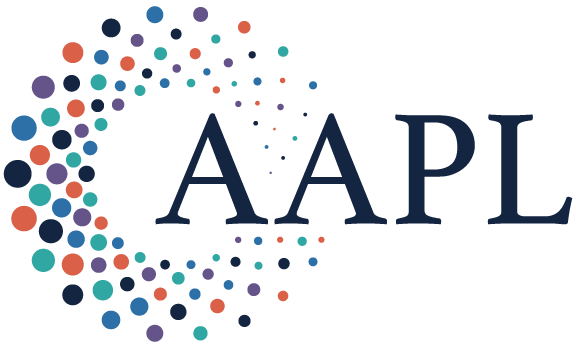Summary:
Why did Moody’s—a legacy financial institution built on risk assessment—move aggressively to adopt generative AI, an unproven technology? Because leadership calculated that the risk of standing still outweighed the risk of moving fast.
In finance, the industry’s cornerstone companies don’t make a habit of dashing headlong to adopt bleeding-edge technologies. As in many conservative and regulated industries, leaders almost always choose to avoid expensive and embarrassing mistakes rather than embrace the risks of being an early adopter. Yet in early 2023, Rob Fauber, the recently appointed CEO of Moody’s—a century-old company whose business is in the methodical assessment of risk—did just that.
The move was based on a contrarian calculation: in the early days of generative AI, standing still actually posed a far higher risk to the company’s future than aggressively adopting a highly imperfect technology. The conventional approach—and the path most companies took—was to test and analyze the shortcomings of this new technology, run small experiments on limited use cases, and wait for the fog of uncertainty to lift. Between model hallucinations, potential regulatory issues, and questions about transparency, most of the industry focused on downside risks. Fauber, on the other hand, saw inaction as the greatest threat to Moody’s business—and AI as a critical opportunity that could have pronounced upside for the company.
So, he committed to embracing the technology internally. There was one key problem, however: Unlike most transformations, the end goal of this initiative wasn’t clear. The tech was evolving incredibly quickly and there were no proven use cases for how it could be applied to create value. Fauber likened the initiative to sprinting into the fog—it might be possible to see a few steps ahead, but no further. That raised a difficult set of questions: how to craft the company’s AI roadmap, and how to bring the board, the senior leadership team, and the entire organization along for the journey, knowing the fog wasn’t going to lift in the short term.
As a professor who studies how to organize for innovation, entrepreneurship and technology strategy, and who interviewed several of Moody’s top leaders, this approach offers lessons for how companies can change their approach to working with rapidly evolving technologies.
Early Days
In the early months of 2023, the buzz around generative AI—particularly after OpenAI’s release of GPT-3.5—grabbed the attention of Moody’s executive leadership team. Fauber, in particular, began experimenting with the new model and exploring its capabilities. Together with Moody’s Analytics President Steve Tulenko, he decided that the groundswell of blogs and tweets and podcasts and posts about gen AI weren’t idle chatter—the technology had the power to transform core elements of Moody’s businesses. The company’s analytics division generated $750 million annually from producing and distributing research reports. With gen AI’s capabilities to digest, analyze and synthesize massive quantities of data and to produce high-quality written distillations of these data, Fauber and Tulenko saw a future in which the company’s report-based revenue stream could be at risk.
The two also looked around at Moody’s peers in the financial services sector, the majority of which were in a holding pattern of watchful waiting. The most common approach was to stand up AI Councils, which generally included representatives from legal, tech, IT, compliance and risk. The abundance of caution made sense. Financial institutions that have made it through 100 years of bull markets, depressions, recessions, and a constant onslaught of bad actors, have tended to survive because they have been effective at managing and minimizing risk.
In this case, however, action seemed like a far less risky choice than stasis. The question, then, was where to start?
Three Guiding Principles
The scale of the required change was daunting—Fauber hoped to for a complete cultural shift. To launch the initiative, he established three guiding principles:
Make everyone an innovator. First, leadership greenlit gen AI access across the entire organization. The company enabled this by deploying gen AI tools to every employee from the start. More than any other technical change in human history, gen AI would enable bottom-up innovation. As the team experimented, they came to see that the technology has the capability to decentralize innovation at scale. The goal was to empower employees to see themselves as able to influence the future of both their own individual work roles and the larger workings of the firm. To capture the idea, Fauber invited the staff to think of themselves as “14,000 innovators.”
Build on new ideas, don’t dismiss them. Second, Fauber urged employees to embrace a “yes, and…” mindset. This approach was as much focused on legal, compliance, and risk staff as it was on the organization’s rank and file. The company needed buy-in from all groups to be successful—the leadership team took the position that when it came to gen AI, a barrier somewhere had the potential to be a barrier everywhere.
Deliver impact. Finally, he emphasized the importance of prioritizing initiatives that contributed measurable value to the business The balance between open experimentation and actual value was important. Fauber knew that the “distraction factor” could be high, and so built a mechanism to prioritize and deploy more resources to those innovations than could meaningfully contributed to the top or bottom line.
These principles were designed to drive a cultural overhaul and a federated approach to innovation. “The key was to create and resource an environment where innovation could happen anywhere in the organization, but with appropriate structures to keep us aligned with two of our core values: trust and accuracy,” says Tulenko.
To operationalize the vision, Moody’s created the Generative Intelligence Group (GiG). The concept was that every member of the company now had “another gig”: AI innovation. Everyone was expected to explore gen AI’s possibilities on the front line of the organization. In this context, GiG acted as a small, central enablement group. Its role was to rapidly vet new tech, deliver the most valuable tools to the organization, and protect the mandates for security, trust, and accuracy. Rather than creating a separate AI division, this structure embraced the “14,000 Innovators” principle.
A change of this magnitude required winning over skeptics at all levels of the company.
Fauber decided to start at the top. To demonstrate gen AI’s capabilities, at the Q2 2023 corporate board meeting, he opened with a deepfake video he made of himself delivering a fictitious earnings call. The board was quickly convinced that gen AI would have radical implications for Moody’s business, and he won their buy in to double down.
To engage employees, Fauber led three town halls where he encouraged candid discussions about gen AI’s implications for the company. These meetings, which were often called with little warning, focused on mass access and empowerment. These were aimed at converting resistance to curiosity and, eventually, enthusiasm.
To enable the cultural shift, leadership also knew that they needed to create a base level of AI fluency across the entire organization. To that end, they created a bespoke gen AI training program and attached a strong incentive: Fauber committed to fund a bonus pool that would trigger if 95% or more of Moody’s employees completed it. Everyone, from administrative assistants to executives, was expected to participate. The training was significantly more technical than previous company-wide education initiatives. Several Moody’s employees were the “actors” in these sessions, recorded at home on Zoom to create a sense of the urgency and “rawness” of the topics. To encourage employees to go even deeper, the company provided everyone with playlists of YouTube videos and extra reading. The company publicly tracked the 95% trigger for the bonus payout in a countdown to year end, and celebrated when the trigger was reached well before the end of year deadline. The bonus payout itself was separately listed on annual comp statements as an “extra” bonus that went to the whole company.
Training for a Marathon When You Can Only See Two Feet Ahead
Most organizational change efforts involve transitioning an organization from an origin to a destination state. The firm begins at point A and its goal is to move to point B. For instance, a traditional software company might transition to a cloud-based model, like Adobe Systems so successfully accomplished. Or a product company might aspire to be a solutions provider, such as John Deere’s migration from selling tractors to precision agricultural solutions. This approach wouldn’t work for trying to keep pace with gen AI, however. The tech was developing so fast, with so many potential applications, that it would require a process of continuous change to an unknown destination state. The company would need to be in an almost perpetual state of adaptation.
Speed was a primary goal. Competitors were spending months in technical evaluations of large language models. Instead of following suit, Moody’s took a more pragmatic approach. “We considered these models as ‘ready-to-use’ tools for leverage, not as inscrutable black boxes requiring months of analysis,” Tulenko says. “Our competitive advantage certainly wasn’t going to come from building a proprietary foundation model—it would come from applying them quickly and intelligently to our unique data assets, domain expertise, and the trust placed in our brand.”
Moody’s technical strategy was to rapidly integrate new AI capabilities onto the desktops of all Moody’s employees—often within hours of them becoming available in market. Whether it was the ability to interrogate PDFs, speech-to-text, or image analysis, as new features dropped into commercially available LLMs, the Moody’s team adopted them in near-real-time within the company’s secure infrastructure. The company also created a small internal team and provided it with a sandbox to experiment with the constant arrival of new third-party tools.
Partnerships were also key to Moody’s roadmap. In July 2023, as momentum was building internally, Moody’s approached Microsoft to form a partnership. The deal, inked in just six weeks, provided access to Azure’s cloud infrastructure, including secure access to some of OpenAI’s models. Beyond that, Moody’s internally developed an orchestration layer that stood on top of foundation models from OpenAI, Anthropic, Meta and Google. The orchestrator could securely allocate prompts to different models, based on factors including probable inference costs and model strengths. The low-code/no-code system the team built allowed any division within the company to rapidly develop their own new applications, but all AI interactions needed to remain within Moody’s secure environment—a critical requirement for maintaining the trust of its customers.
These steps allowed Moody’s to maintain security and agility—keeping all activity safely within secure infrastructure while delivering new capabilities to employees at the pace at which they were arriving to market.
In the “14,000 Innovators” program’s first weeks, employees logged hundreds of use cases, and millions of prompts were executed against Moody’s own copilot. The customer service department deployed the company’s “Build-Your-Own Assistant” capability to create a new application—the Customer Service Assistant—that resulted in millions of dollars of savings in the first three months of its use. The learnings from these varied use cases all laid the foundation for Moody’s first gen AI commercial endeavor.
Before EOY 2023—just 5 months after the gen AI initiative kicked off came the commercial launch of Moody’s Research Assistant. “What makes our Research Assistant unique isn’t just the AI technology,” Tulenko explains. “It is knowing how financial professionals work, and applying that domain expertise.”
Here Come the Agents
If anything, Fauber and the leadership team have pushed for an acceleration of change in recent months, to keep up with the unprecedented pace of progress in the gen AI ecosystem. By March 2024, well ahead of industry buzz about agentic workflows, Moody’s had already built and deployed their own agents. This initiative, known internally as Recon.AI, demonstrated how quickly the new Moody’s could move from whitepaper to experiments to the instantiation of innovation.
In December 2024, Moody’s shared the stage with Amazon, a new gen AI partner, as AWS launched its Bedrock Agents product. Moody’s multi-agent approach is designed to generate comprehensive financial risk reports for customers. Creating such a report previously would have required a week’s time from an experienced Moody’s analyst. A supervisor AI agent with a team of AI sub-workers could accomplish the same analysis task in just one hour.
Lessons for Other Companies
Moody’s experience can offer other companies concrete lessons for how to embrace this technology.
Waiting has a price.
A true gen AI risk calculation heavily factors in the downside of inaction. For Moody’s the danger of inaction could have opened the door to new types of competitors who now had tools that lowered barriers to enter Moody’s traditional markets. There was also the risk of talent loss to factor in—Moody’s couldn’t afford to lock its employees out of opportunities to adapt and learn. Heavily weighting the risk of inaction helped set leaders up to make the initial decision to go all in. The big steps taken as a result of that initial decision set the tone for the rest of the transformation effort—people felt empowered and the market stood up and noticed. Those new competitors were now coming to Moody’s to partner, rather than to compete.
Embrace decentralized innovation.
If accompanied by organization-wide enablement and empowerment, gen AI will radically change the locus of innovation, from centralized and dedicated groups (like R&D, product) with large budgets, to bottom-up at scale. The mass experimentation approach shortened the product time to market because of the pure number of options to select from. The risk Moody’s faced with this approach was one of prioritization, not optionality—a good problem to have.
Change is a constant.
The rate of progress and amount of uncertainty in gen AI requires leaders to develop and implement continuous change processes. Organizations will need to remain in continuous motion. Moody’s adapted to this new paradigm by focusing on centralizing only those elements that enabled scaling. Moreover, by bringing risk, compliance and legal directly in the change program, it avoided some of the common speedbumps that slow organizations down or trap ambitious efforts in protracted risk evaluations.
Don’t go it alone.
Gen AI is ecosystemic, and outside partnerships are likely to be essential for obtaining its benefits. The ability to not only get early access to, but also shape Big Tech company roadmaps informed what forward planning Moody’s could undertake given the uncertainty. Quickly identifying where you need—or would benefit from—outside help can allow you to better allocate scarce resource toward core competencies.
Education and empowerment create buy in—and financial incentives get the ball rolling.
Reducing uncertainty, providing transparency and being open about impact, combined with a clear desire to educate and empower all employees even though some would clearly be (negatively) impacted by the change worked as a technique to get employees to lean in. Once the foundations for adoption were established, Moody’s found that practical activity and hands on access worked well as a technique to drive change.
From Copilot to Agentic Coworkers
As Moody’s embraced AI, questions about the future of its workforce naturally arose. AI will present many opportunities for efficiency gains, raising the possibility that Moody’s could significantly scale revenue without a proportional increase in the company’s headcount. In this sense, Fauber could see a future where the organization’s structure would evolve from its current pyramid shape to something narrower, improving operational efficiency in relation to scalable growth and positioning Moody’s as a more agile company in the fast-approaching AI era. This futuristic vision complements Fauber’s current thinking about workforce impacts: “At Moody’s, I see gen AI as a story of human empowerment, not human replacement.”
Moody’s early journey into gen AI offers a compelling lesson in proactive adaptation. Through early recognition of the transformative potential of gen AI, Fauber, Tulenko and team began to reinvent a century-old company in a timespan of less than a year. The journey hasn’t been without challenges, but on account of a nimble and bought-in leadership team, a focus on cultural change, a series of key strategic partnerships, and a massive commitment to company-wide innovation powered from the bottom-up, Moody’s is forging its past into a radically different, gen-AI first future.
Copyright 2025 Harvard Business School Publishing Corporation. Distributed by The New York Times Syndicate.
Topics
Technology Integration
Differentiation
Strategic Perspective
Related
A Smarter Way to DisagreeCoaching by Doctors for DoctorsThe Gen AI Playbook for OrganizationsRecommended Reading
Problem Solving
A Smarter Way to Disagree
Problem Solving
Coaching by Doctors for Doctors
Operations and Policy
The Gen AI Playbook for Organizations
Operations and Policy
Stop Running So Many AI Pilots
Strategy and Innovation
Healthcare Insights: Curated for HALM November/December 2025
Strategy and Innovation
Physicians Can Play a Role in the Safety of Patients Considering Treatments Abroad


